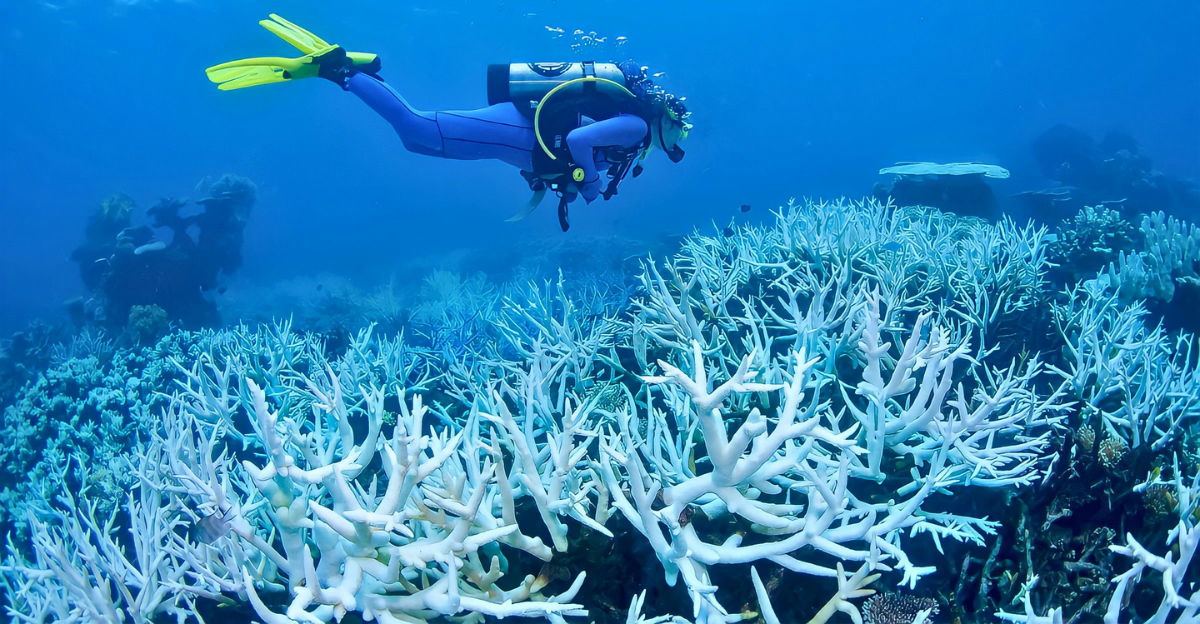
The world’s coral reefs are facing an unprecedented crisis as the fourth global coral bleaching event unfolds, marking the largest and most severe bleaching episode ever recorded. Since early 2023, elevated ocean temperatures linked to climate change have caused widespread heat stress across coral reefs in the Northern and Southern Hemispheres, affecting over 84% of the planet’s reefs across 80 countries and territories.
The Unprecedented Scale of the Fourth Global Bleaching Event
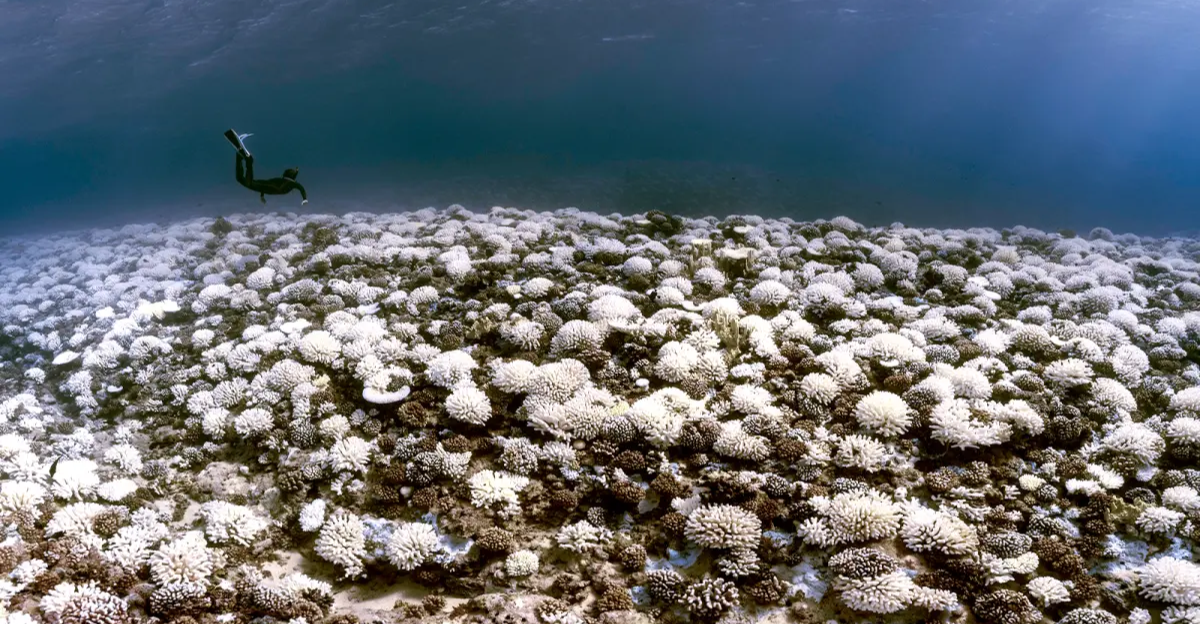
The ongoing fourth global coral bleaching event, officially declared by the International Coral Reef Initiative (ICRI) in April 2025, is the most extensive recorded. From January 2023 to March 2025, 84% of the world’s coral reefs have experienced bleaching-level heat stress, affecting 82 countries and territories worldwide. Triggered by prolonged marine heatwaves linked to climate change, this event surpassed the 2014–2017 crisis, which impacted 68% of reefs and shows no signs of abating.
“We just may never see the heat stress that causes bleaching dropping below the threshold that triggers a global event. So this may be the last one,” said marine scientist and former NOAA Coral Reef Watch coordinator Dr. Mark Eakin. The scale of destruction spans every central ocean basin, from Florida’s reefs to previously resilient “supercorals” in the Red Sea, with experts fearing that 90% of reefs could vanish without urgent global action to curb emissions and mitigate thermal stress.
What Causes Coral Bleaching?
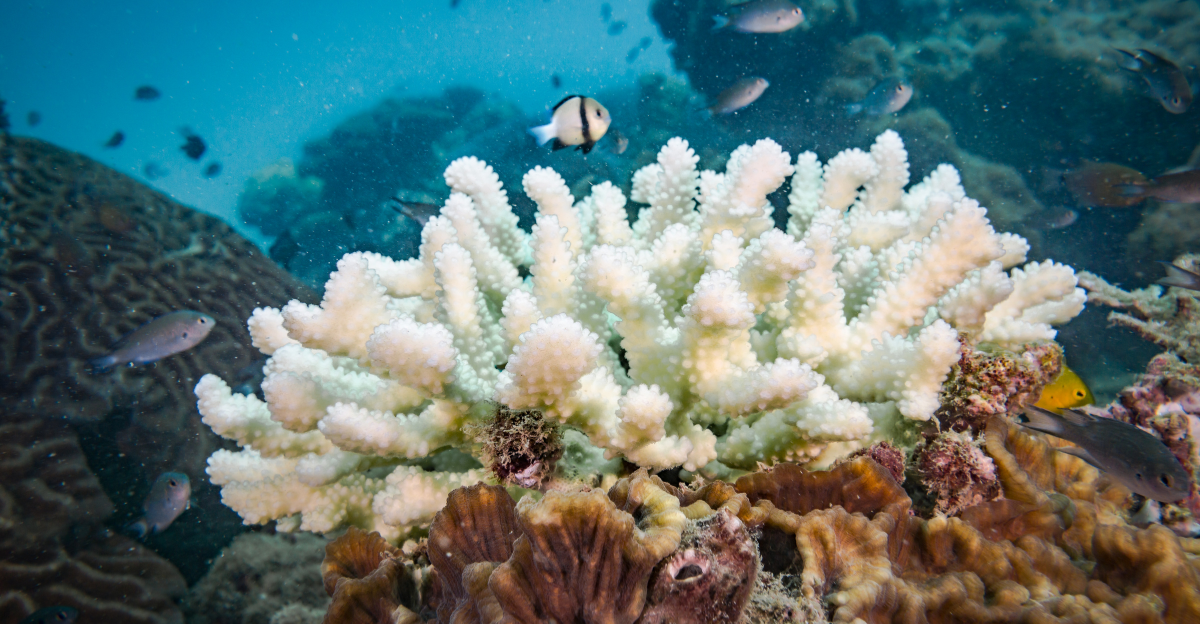
Coral bleaching is primarily caused by environmental stressors that disrupt the symbiotic relationship between corals and the microscopic algae called zooxanthellae that live within their tissues. The leading cause is increased ocean temperatures due to climate change; a slight rise of 1 to 2°C above normal can trigger bleaching events.
When water temperatures rise, zooxanthellae produce toxic reactive oxygen species, prompting corals to expel them, which leads to the loss of color and vital nutrients since these algae provide up to 90% of the coral’s energy.
Geographic Spread and Impact
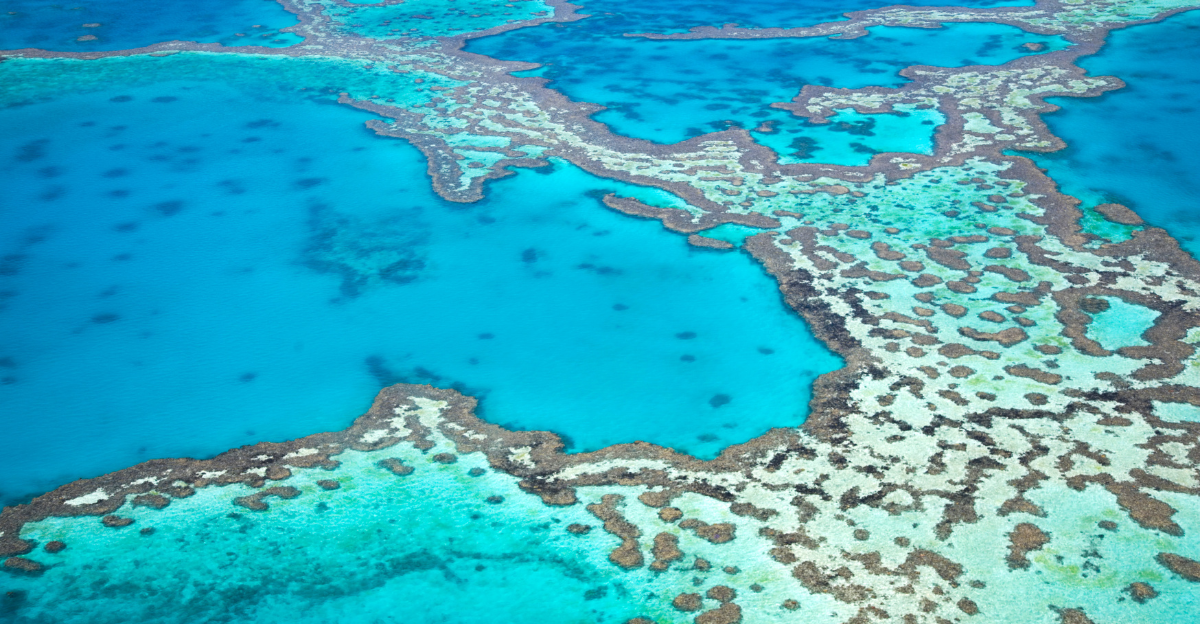
Since early 2023, mass bleaching has been confirmed in at least 53 countries and territories, including critical reef areas such as Florida and the Caribbean, the Eastern Tropical Pacific (Mexico, Costa Rica, Panama, Colombia), Australia’s Great Barrier Reef, and vast regions of the South Pacific like Fiji and Vanuatu. The Indian Ocean has seen severe bleaching in countries like Kenya, Tanzania, Seychelles, and Mauritius, with widespread heat stress also reported in the Red Sea, Persian Gulf, and South Atlantic along Brazil’s northeast coast.
“As the world’s oceans continue to warm, coral bleaching is becoming more frequent and severe,” said Derek Manzello, Ph.D., NOAA CRW coordinator. “When these events are sufficiently severe or prolonged, they can cause coral mortality, which can negatively impact the goods and services coral reefs provide that people depend on for their livelihoods.”
Ecological Importance of Coral Reefs
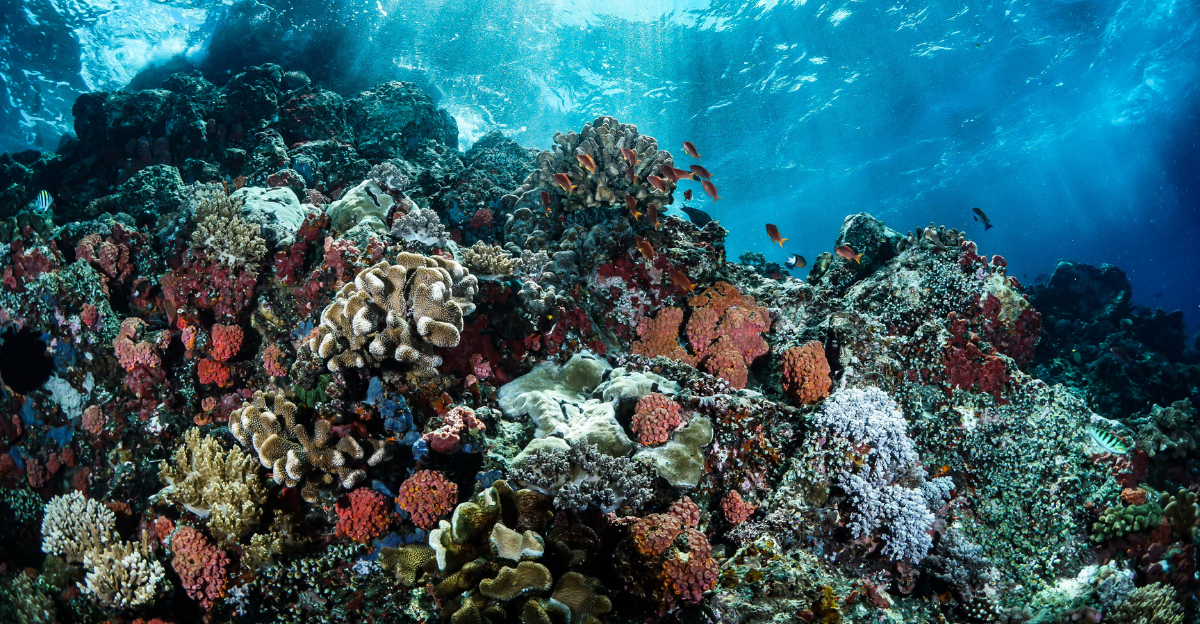
Coral reefs are among Earth’s most ecologically important ecosystems, supporting approximately 25% of all marine species despite covering less than 1% of the ocean floor. They provide critical habitat, feeding, breeding, and nursery grounds for a vast array of marine life, including thousands of fish, mollusks, and other invertebrates, as well as iconic species like sea turtles and dolphins.
Beyond their biodiversity, coral reefs play a vital role in protecting coastlines by absorbing up to 97% of wave energy, thereby reducing coastal erosion, flooding, and damage from storms and tsunamis. They also support the livelihoods of over 500 million people worldwide through fisheries, tourism, and coastal protection.
Economic Consequences of Coral Loss
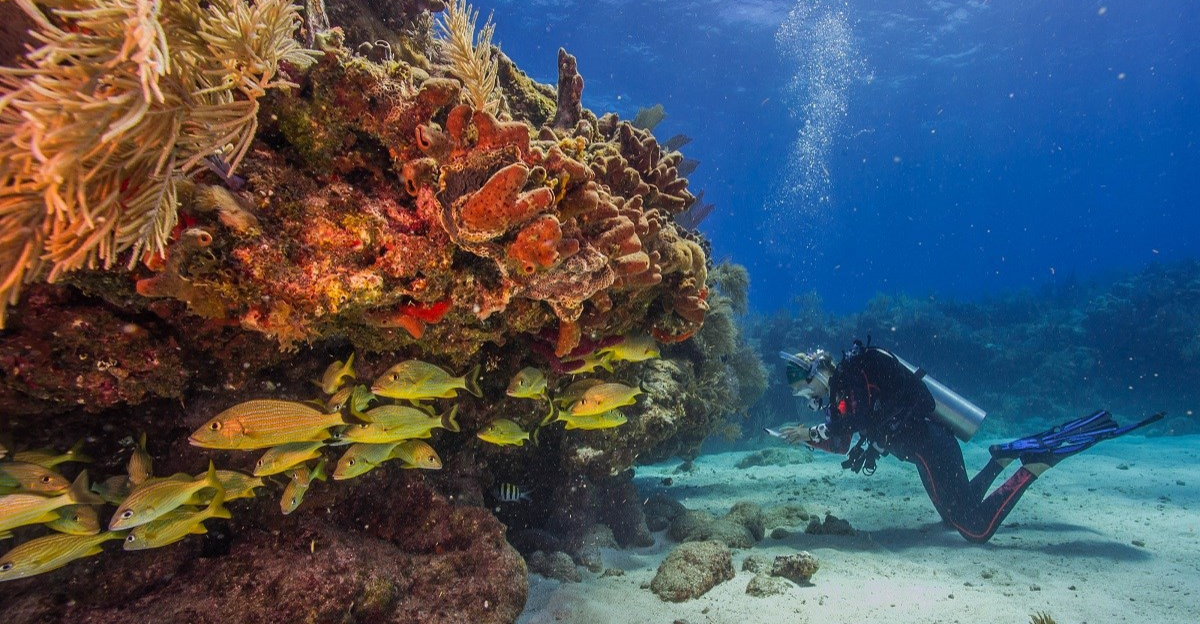
Healthy coral reefs generate billions of dollars annually through commercial and subsistence fisheries, with losses in fishery yields estimated to reduce net benefits by 30–45%, translating to tens or even hundreds of millions of dollars lost each year in regions like the Caribbean. Tourism, notably dive tourism, which contributes significantly to the GDP of many coastal nations, also suffers as degraded reefs become less attractive to visitors, potentially reducing tourism revenues by 2–5%.
Coral reefs also provide natural coastal defenses by absorbing wave energy, thereby preventing erosion and flooding; their degradation increases the need for costly artificial protections and raises flood risks, imposing additional economic burdens on coastal communities. “Florida’s coral reefs serve as a natural barrier against coastal flooding, shielding coastal communities from the destructive forces of storms and hurricanes,” said Curt Storlazzi, USGS Research Geologist.
“Understanding the social and economic value of these reefs allows informed decisions to be made about preserving and restoring them to reduce coastal risks and increase the resiliency of coastal communities.”
The Bleaching Alert Scale and New Risk Levels
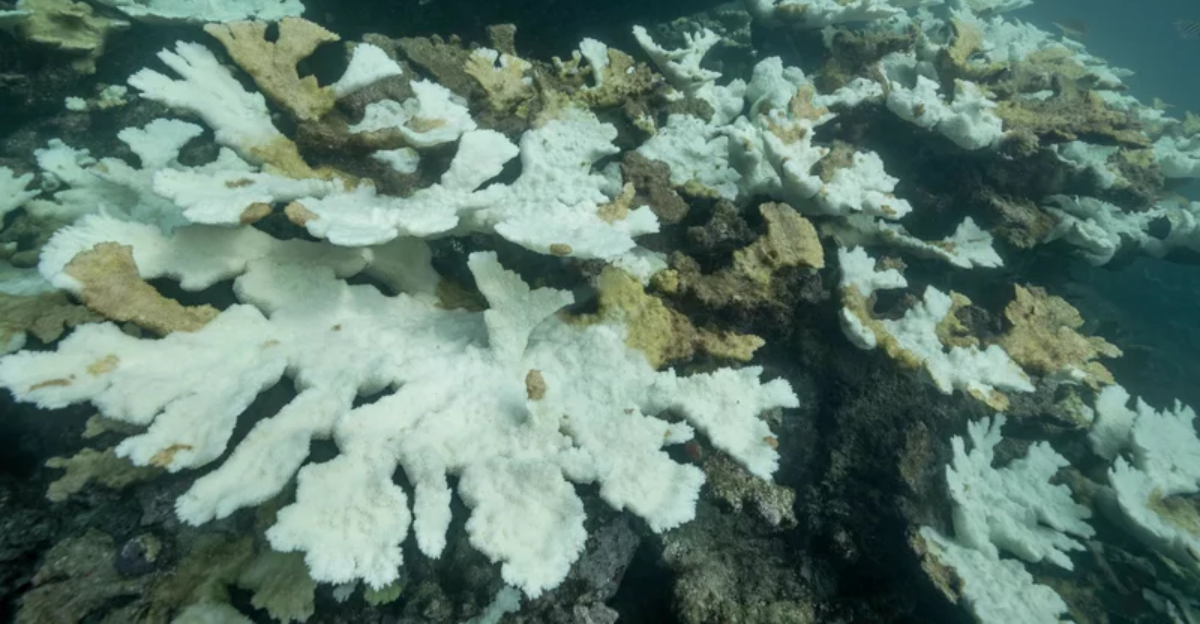
Previously, the scale included five categories from “No Stress” to “Bleaching Alert Level 2,” with Level 2 indicating severe, widespread bleaching and likely coral mortality. The new system introduces three additional alert levels-Levels 3, 4, and 5-to describe extreme heat stress conditions surpassing the old Level 2 threshold. Bleaching Alert Level 5, the highest, signals a risk of near-complete coral mortality, with over 80% of corals in affected areas at risk of dying.
“Unfortunately, coral bleaching had become the new normal for many coral reefs, including the reefs in south Florida,” said Lauren Toth, USGS Research Physical Scientist. “But what’s troubling about this event is that this year, the water isn’t just warmer than any year on record, but also the warming started in July rather than late August when we typically see coral bleaching. Corals will have to endure much more heat stress than they’re used to to survive, and many may not make it.”
The Urgency of Global Climate Action
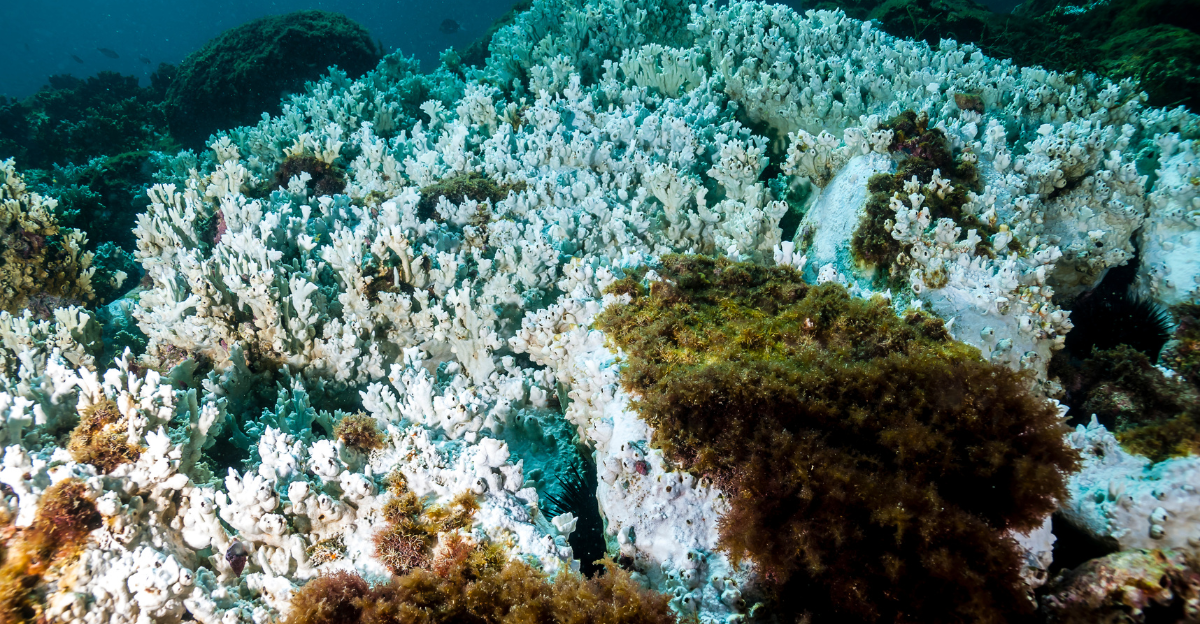
As marine heatwaves become more frequent and intense due to climate change, coral reefs are subjected to prolonged stress, leading to widespread bleaching and mortality. Experts emphasize that without rapid and decisive reductions in carbon emissions, up to 90% of the world’s coral reefs could vanish within the next few decades, threatening marine biodiversity, coastal protection, and the livelihoods of nearly a billion people who depend on these ecosystems.
“Our research has shown that coral reefs have been severely impacted by ocean warming in the past three to four decades, yet some reef locations show lower rates of warming or benefit from mitigating circumstances due to local oceanography,” said Jens Zinke a Professor of Palaeobiology at the University of Leicester.
“Some reefs can resist or recover from thermal stress faster than others, and these reefs may serve as sanctuaries under future warming. This is a major new research direction—to find and protect those locations before they are gone.”
How International Cooperation Can Help

Initiatives like the International Coral Reef Initiative (ICRI) bring together governments, scientists, and organizations to develop unified strategies for reef protection, restoration, and sustainable management. Multilateral environmental agreements and partnerships under the United Nations framework also integrate coral reef conservation into broader biodiversity and climate action goals, enabling resource mobilization and policy alignment.
Large-scale projects like the Global Fund for Coral Reefs combine public and private funding to support resilience-building and innovative solutions worldwide. Regional collaborations, like the Coral Triangle Initiative, exemplify how neighboring countries can work together to protect shared reef ecosystems and the livelihoods dependent on them.
What Can We Do?

You might feel that there isn’t much you can do to make a change as an individual, but you’re wrong. Small changes piled together make a big change. Reducing your carbon footprint by conserving energy, using sustainable transportation, and supporting renewable energy sources can help combat climate change, the root cause of coral bleaching. Choosing sustainable seafood and avoiding products that harm marine habitats also support reef health.
Raising awareness through education and advocacy encourages communities and policymakers to prioritize coral conservation. Supporting organizations dedicated to marine conservation through donations or volunteering amplifies these efforts. Remember, every single person adds to the bigger change.
Explore more of our trending stories and hit Follow to keep them coming to your feed!

Don’t miss out on more stories like this! Hit the Follow button at the top of this article to stay updated with the latest news. Share your thoughts in the comments—we’d love to hear from you!







